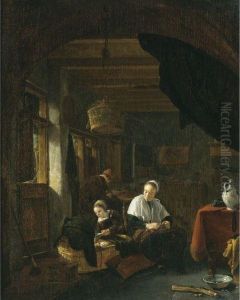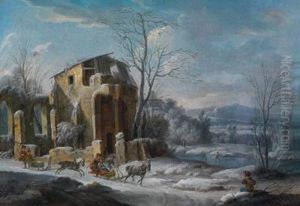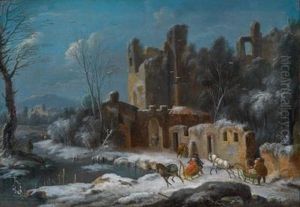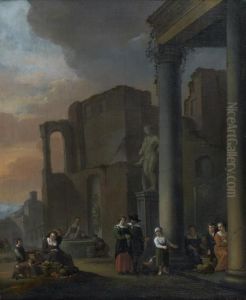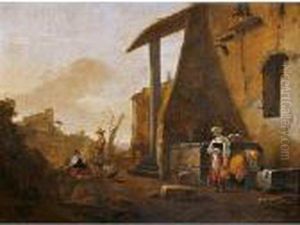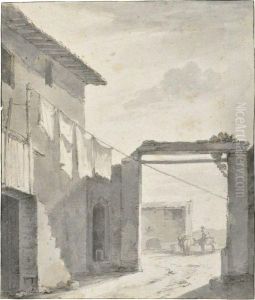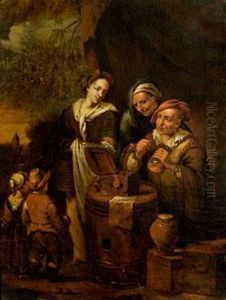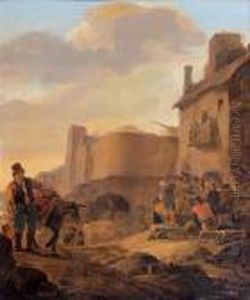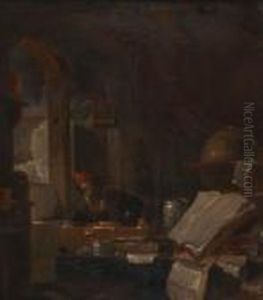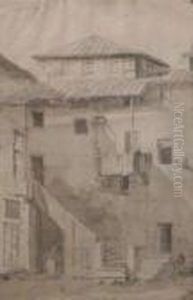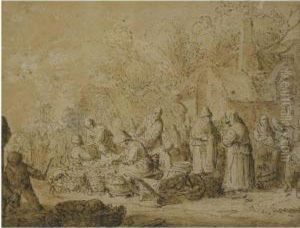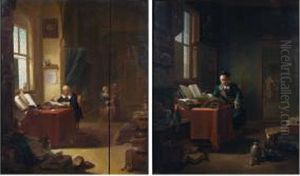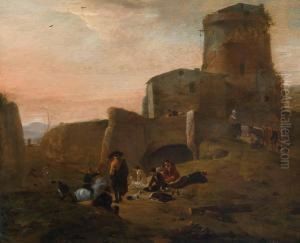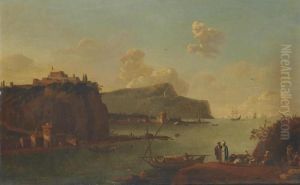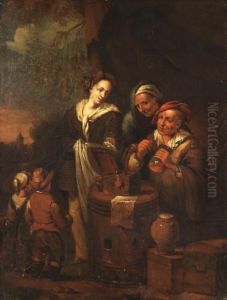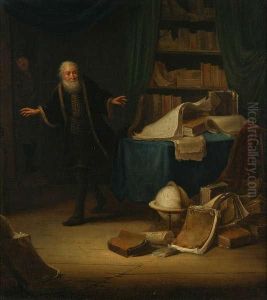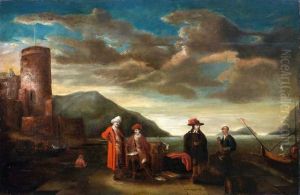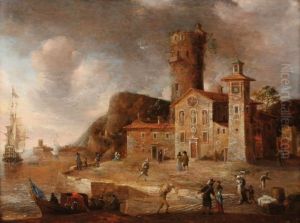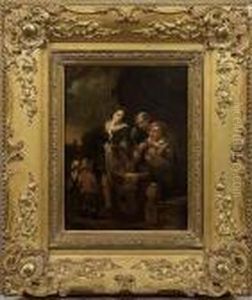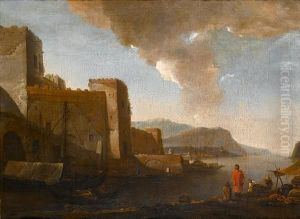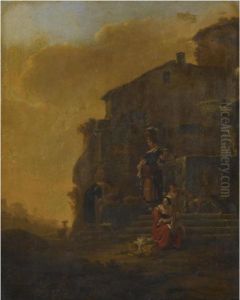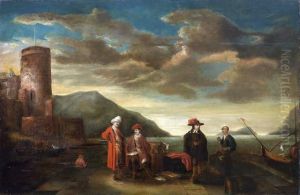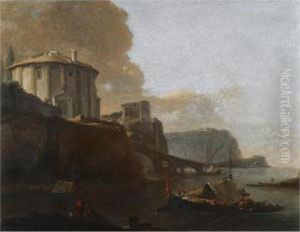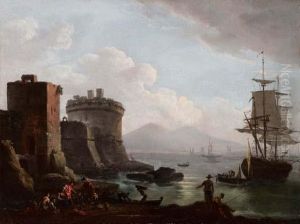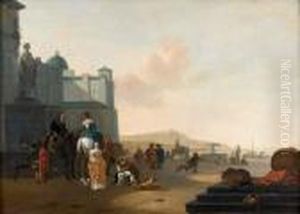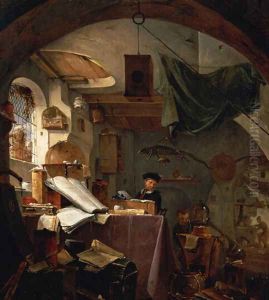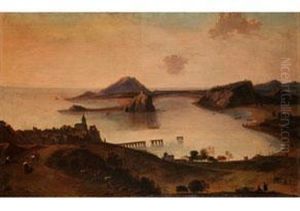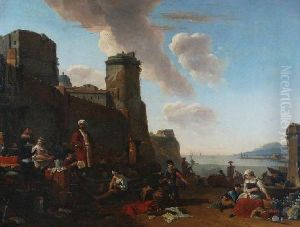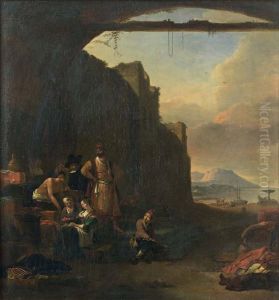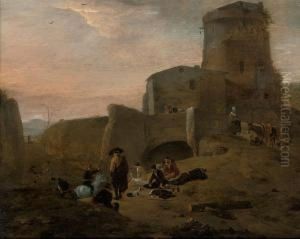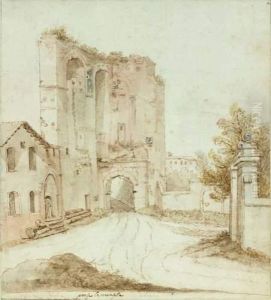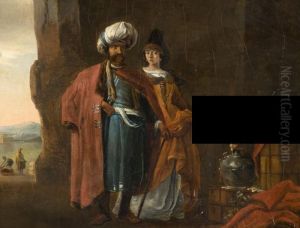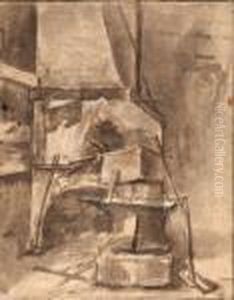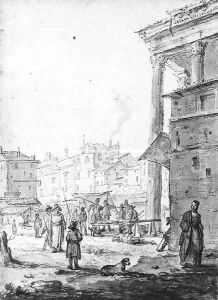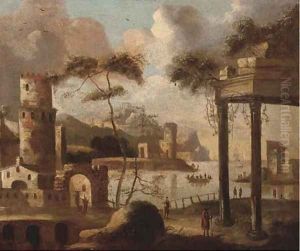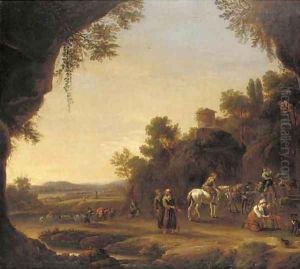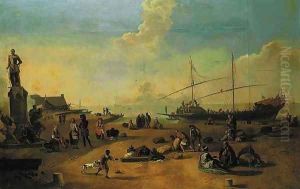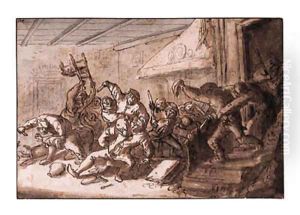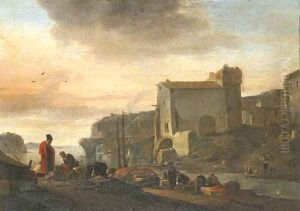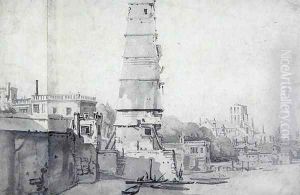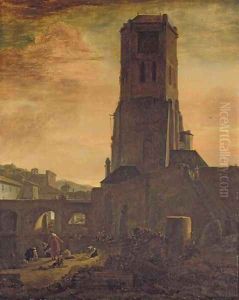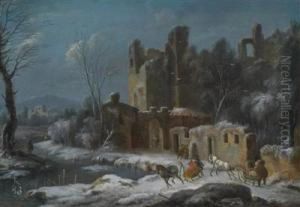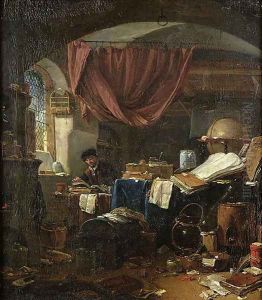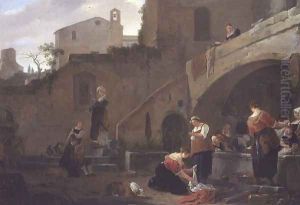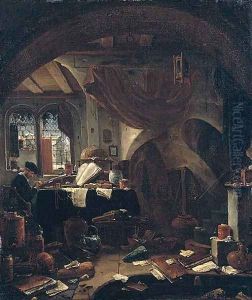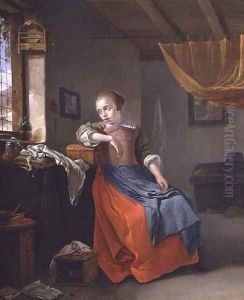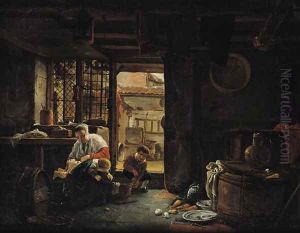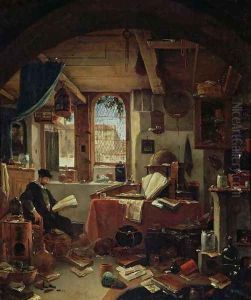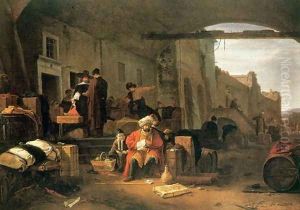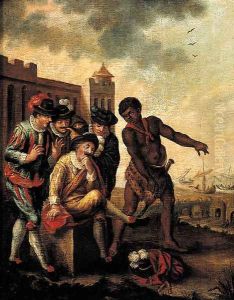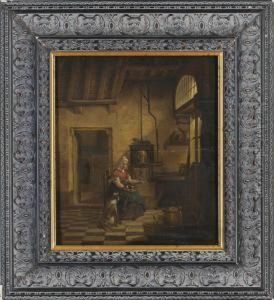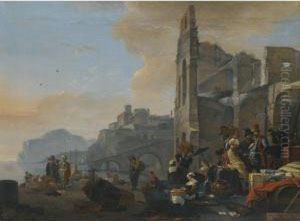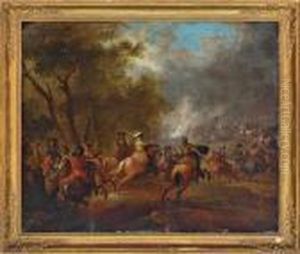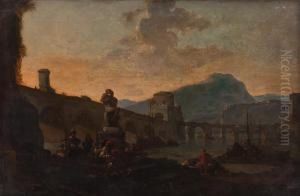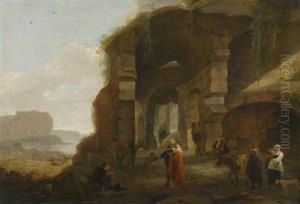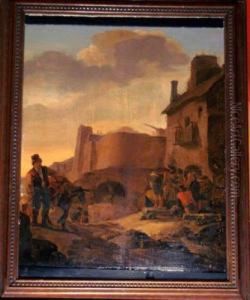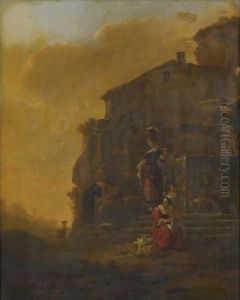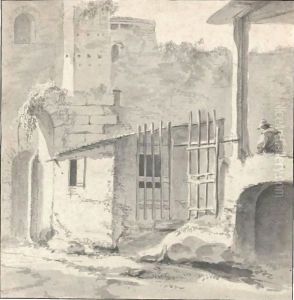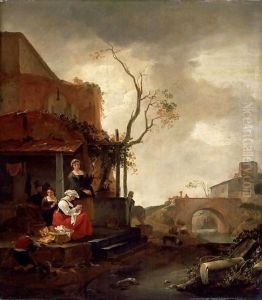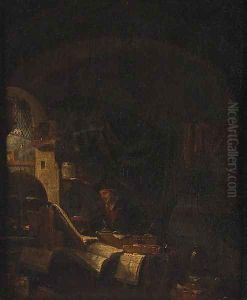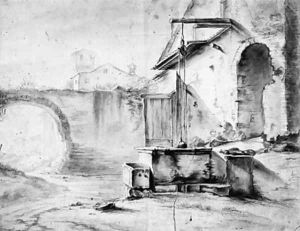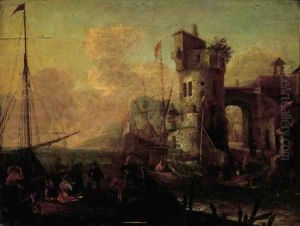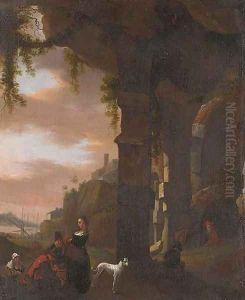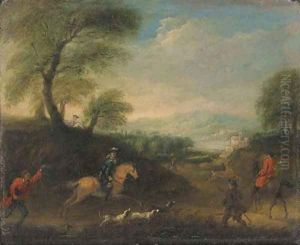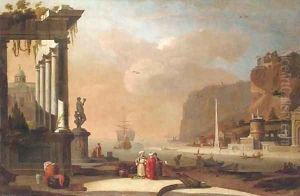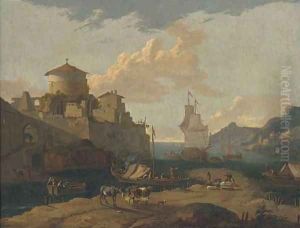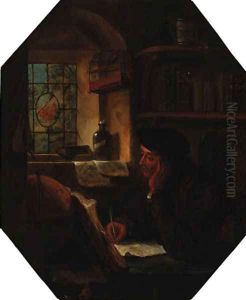Thomas Wyck Paintings
Thomas Wyck, also known as Thomas Wijck or Wyk, was a Dutch painter born in 1616 in Beverwijk, a small town in the Netherlands. His exact birth date is not documented, but his contributions to the Dutch Golden Age of painting are well recorded. Wyck is primarily known for his skillful depiction of Italianate landscapes, bustling port scenes, and detailed interiors, often featuring alchemists at work. His work reflects the influence of the Italian Baroque style, combined with the Dutch tradition of realism, a synthesis that was quite popular among Dutch artists who traveled to Italy to study its art and scenery.
Wyck's early life is somewhat shrouded in mystery, but it is believed he traveled to Italy in his youth, an experience that profoundly influenced his artistic style. During his time in Italy, he became enamored with the Italian landscape and the vibrant life in its cities and ports, elements that would later become prominent in his paintings. Upon his return to the Netherlands, he settled in Haarlem, where he became a member of the Haarlem Guild of St. Luke in 1642. This period marked the beginning of his professional career as an artist, during which he produced most of his known works.
Thomas Wyck was also known for his talent in painting genre scenes, particularly those depicting the activities of alchemists. These paintings are valued not only for their artistic quality but also for their detailed representation of 17th-century scientific practice. They offer a glimpse into the workshops of alchemists, filled with an array of scientific instruments and cluttered with the chaos of experimentation, reflecting the contemporary fascination with alchemy and the pursuit of knowledge.
Throughout his career, Wyck taught several students, including his son, Jan Wyck, who also became a painter, albeit more renowned for his battle scenes and equestrian portraits. Thomas Wyck's influence extended beyond his immediate circle, as his works inspired later artists, contributing to the rich tapestry of Dutch painting.
Wyck's art was appreciated for its dynamic compositions, attention to detail, and the ability to capture light and atmosphere, qualities that made his paintings highly sought after in his time and in the centuries that followed. Despite his death in 1677, Thomas Wyck's legacy endures, with his works held in high esteem and featured in prominent collections and museums around the world, continuing to fascinate art lovers and historians alike.
